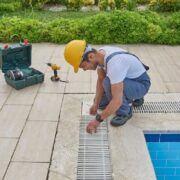You need to make sure the sump pump in your house is running. It’s not a great idea to ignore this simple maintenance task, as it can save you from costly repairs or the stress of having a basement full of water.
A few essential tips will help you maintain your sump pump, so it continues to work effectively.
Table of Contents
Check The Pit
One of the essential parts of a sump pump is its pit, which collects water from the basement and pumps it outside. It must be a large enough pit to support the pump and have a discharge pipe that doesn’t rush back into the home.
Check your pit frequently to ensure its solid and big enough for the pump. You can also adjust the hole if you notice it sagging or tilting on one side.
It is best to test the pit with a few gallons of water. It might be time to replace your sump pump if the water doesn’t cause the float or pressure switch to activate.
To keep your pump operating efficiently, perform this quick test at least once a year. You can keep from having to replace your sump pump. It takes little time and is simple. Call a plumber if you need sump pump repair in Chicago and need help handling it.
Check The Water Level
One of the most essential sump pump maintenance tips is to check the water level. It is necessary if you live in an area where floods are common.
Keeping your water level at least six inches below the basement floor helps give you more cushion in case a flash flood occurs. It also ensures that your sump pit is deep enough to handle the flood water and prevent a flooded basement.
Pouring a five-gallon bucket of water into your sump pit is the easiest way to check the water level. It should raise the float switch on the side of your pedestal or submersible pump, which will then kick on to begin draining your basement.
If the float doesn’t rise, there may be a blockage in the discharge pipe. It can be caused by rocks, twigs or other debris that is in the pipe. It can dislodge it by running high-pressure water through the pipe or using a plumbing snake.
Check the Discharge Pipe
Your sump pump needs to move water from your house into a drainage area to function correctly. It can include a sewer, natural waterway or another exit point.
Getting the discharge pipe right can help keep your pump in good working condition for a long time. It’s essential to make sure the pipe is long enough so that you’re able to connect it to a reliable drainage location and that there is a check valve installed in it, which prevents pumped water from flowing back down into your pit when your pump is turned off.
The discharge pipe should be buried as far away from the foundation of your house as possible, which can help it drain more efficiently. It should also be long enough to ensure it can run to a drainage location approved by local regulations.
Test the Pump
A sump pump is one of the essential tools a homeowner has in their arsenal to keep their basement and home safe from flooding. But to ensure it works when you need it most, testing the pump before the storm season arrives is essential.
First, make sure that the electrical power is flowing to the pump. Most sump pumps depend on a GFCI electrical connection and can’t be operated without it.
If not, you should disconnect the pump from the float arm or pressure sensor and plug it into the wall outlet. It will trigger the unit to start and operate as it should.
Next, fill the sump pit with water until it reaches a certain level. The rising sump float activates the sump pump, which drains water out of your basement and into the sewer system.





















Comments